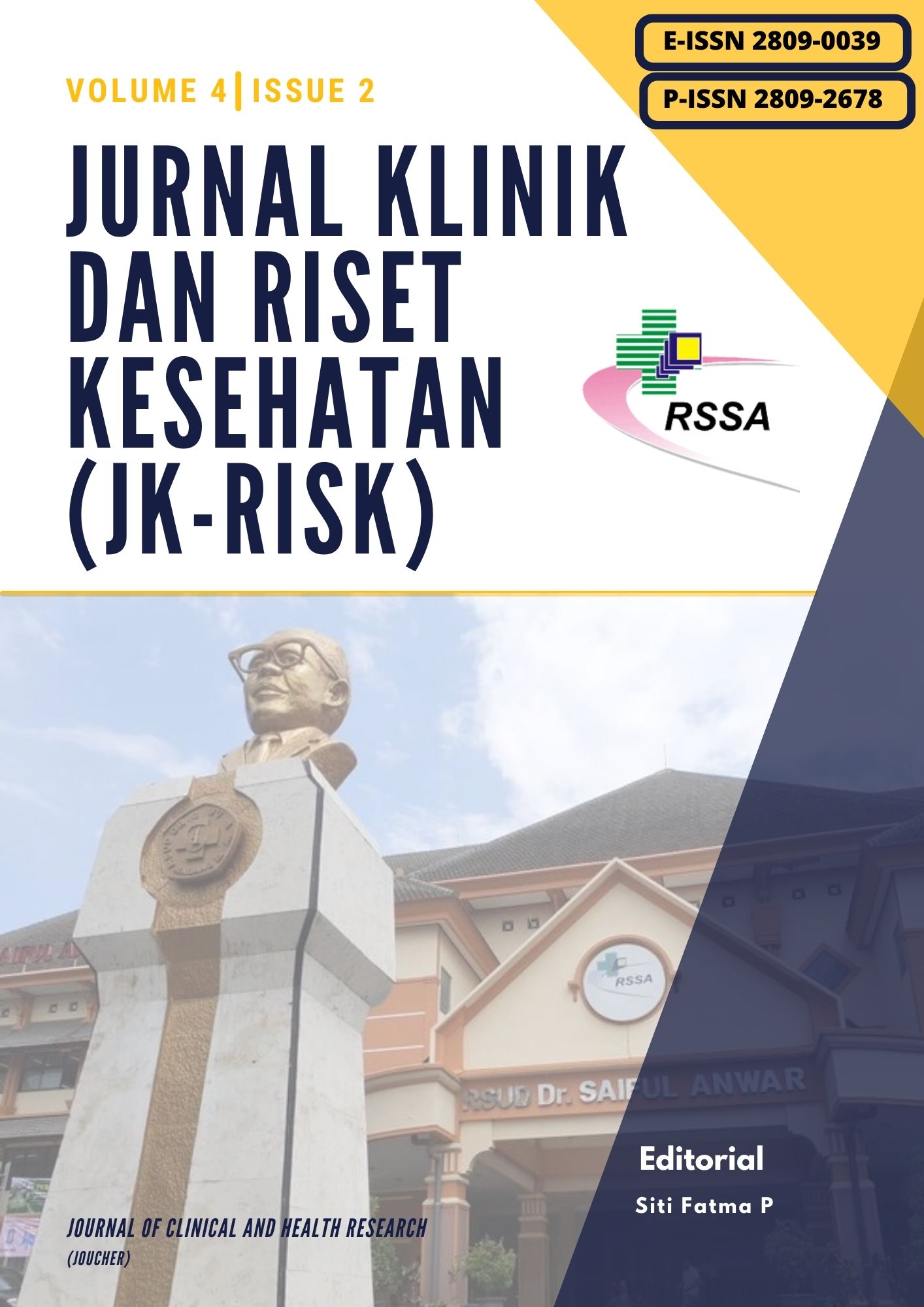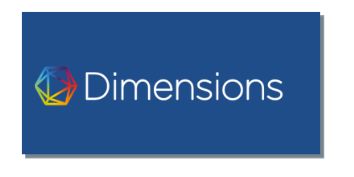Physiotherapy Program Profile for Stroke Inpatients Based on NIHSS at Dr. Saiful Anwar General Hospital Malang in January-March 2023
DOI:
https://doi.org/10.11594/jk-risk.04.2.3Keywords:
stroke, NIHSS, physiotherapy, inpatientAbstract
Introduction: Stroke is one of the highest causes of disability in the world. Indonesia already has guidelines for stroke rehabilitation, but the implementation of these guidelines in hospitals in Indonesia is rarely studied.
Purpose: This study aims to determine the profile of the physiotherapy program in post-acute phase stroke patients who are hospitalized at Dr. Saiful Anwar General Hospital Malang in January-March 2023 based on the National Institutes of Health Stroke Scale (NIHSS).
Methods: The study was conducted using a descriptive-quantitative method. Data taken from the electronic medical records of Dr. Saiful Anwar Malang in January-March 2023.
Results: There were 129 stroke patients who met the inclusion criteria consisting of 56.6% men and 43.4% women, with the most age range being 51-60 years (34.88%). The highest stroke severity was severe stroke (NIHSS 21-42) as much as 34.88%, then moderate stroke (NIHSS 5-15) as much as 31.01%, moderate-severe stroke (NIHSS 16-20) 19.38%, and mild stroke (NIHSS 1-4) 14.73%. Almost all patients in all levels of severity received proper positioning, gradual mobilization, and chest physical therapy (the smallest percentage was 73.68% in mild stroke). Apart from these three interventions, for mild stroke, the most rehabilitation intervention given was AAROM exercise (57.89%), for moderate stroke was AROM exercise (62.5%), for moderate-severe stroke was PROM exercise (72%) , in severe stroke is PROM exercise.
Conclusion: All stroke patients at all severity levels receive proper positioning, gradual mobilization, and chest physical rehabilitation, but motor, sensory, cognitive, and other physioteherapy programs for patients differ depending on the severity.
Downloads
References
Feigin VL, Brainin M, Norrving B, Martins S, Sac-co RL, Hacke W, Fisher M, Pandian J, Lindsay P. World Stroke Organization (WSO): global stroke fact sheet 2022. International Journal of Stroke. 2022 Jan;17(1):18-29. https://doi.org/10.1177/17474930211065917 DOI: https://doi.org/10.1177/17474930211065917
Hafdia AN, Arman A, Alwi MK, Asrina A. Ana-lisis Kualitas Hidup Pasien Pasca Stroke di RSUD Kabupaten Polewali Mandar. InProsiding Seminar Nasional Sinergitas Multidisiplin Ilmu Pengetahuan dan Teknologi 2018 Jul 31 (Vol. 1, pp. 111-118).
Menteri Kesehatan Republik Indonesia. 2019. Pedoman Nasional Pelayanan Kedokteran Tata Laksana Stroke. Jakarta: tidak diterbitkan.
Kogan E, Twyman K, Heap J, Milentijevic D, Lin JH, Alberts M. Assessing stroke severity using electronic health record data: a machine learn-ing approach. BMC medical informatics and decision making. 2020 Dec;20:1-8. https://doi.org/10.1186/s12911-019-1010-x DOI: https://doi.org/10.1186/s12911-019-1010-x
Rexrode KM, Madsen TE, Yu AY, Carcel C, Lichtman JH, Miller EC. The impact of sex and gender on stroke. Circulation research. 2022 Feb 18;130(4):512-28.
https://doi.org/10.1161/CIRCRESAHA.121.319915 DOI: https://doi.org/10.1161/CIRCRESAHA.121.319915
Winstein CJ, Stein J, Arena R, Bates B, Cherney LR, Cramer SC, et al. Guidelines for Adult Stroke Rehabilitation and Recovery. Stroke. 2016;47:000–000. https://doi.org/10.1161/STR.0000000000000098 DOI: https://doi.org/10.1161/STR.0000000000000098
Menezes KK, Nascimento LR, Avelino PR, Al-varenga MTM, Teixeira-Salmela LF. Efficacy of Interventions to Improve Respiratory Function After Stroke. Respir Care. 2018 Jul;63(7):920-933. doi: 10.4187/respcare.06000. Epub 2018 May 29. PMID: 29844210. https://doi.org/10.4187/respcare.06000 DOI: https://doi.org/10.4187/respcare.06000
Srinayanti Y, Widianti W, Andriani D, Firdaus FA, Setiawan H. Range of motion exercise to improve muscle strength among stroke pa-tients: a literature review. International Jour-nal of Nursing and Health Services (IJNHS). 2021 Nov 23;4(3):332-43. https://doi.org/10.35654/ijnhs.v4i3.464 DOI: https://doi.org/10.35654/ijnhs.v4i3.464
Khotimah DK, Purnomo SE. Efektifitas Facial Massage dan Facial Expression Terhadap Kes-imetrisan Wajah Pasien Stroke dengan Face Drooping di RS Mardi Rahayu Kudus. Karya Ilmiah. 2016.
Song GB, Heo JY. The effect of modified bridge exercise on balance ability of stroke patients. Journal of Physical Therapy Science. 2015;27(12):3807-10. https://doi.org/10.1589/jpts.27.3807 DOI: https://doi.org/10.1589/jpts.27.3807
Han, Byung & Song, Hyun & Kim, Ji. (2011). Vestibular Rehabilitation Therapy: Review of Indications, Mechanisms, and Key Exercises. Journal of clinical neurology (Seoul, Korea). 7. 184-96. 10.3988/jcn.2011.7.4.184. https://doi.org/10.3988/jcn.2011.7.4.184 DOI: https://doi.org/10.3988/jcn.2011.7.4.184
Perhimpunan Dokter Spesialis Rehabilitasi Medik Indonesia. 2014. Panduan Rehabilitasi Stroke. Jakarta: CV Subak Kreasi Mandiri.
Carlsson H, Rosén B, Pessah-Rasmussen H, Björkman A, Brogårdh C. SENSory re-learning of the UPPer limb after stroke (SENSUPP): study protocol for a pilot randomized con-trolled trial. Trials. 2018 Dec;19:1-8. https://doi.org/10.1186/s13063-018-2628-1 DOI: https://doi.org/10.1186/s13063-018-2628-1
O'Donoghue M, Leahy S, Boland P, Galvin R, McManus J, Hayes S. Rehabilitation of cognitive deficits poststroke: Systematic review and me-ta-analysis of randomized controlled trials. Stroke. 2022 May;53(5):1700-10. https://doi.org/10.1161/STROKEAHA.121.034218 DOI: https://doi.org/10.1161/STROKEAHA.121.034218
Farid J, Amin R, Sheikh MA, Irfan M, AlRuwaili R, Alruwaili M, Ali NH, Albarrak AM, Rahman S. Prevalence and prediction of pressure ulcers in admitted stroke patients in a tertiary care hospital. Journal of Tissue Viability. 2022 Nov 1;31(4):768-75. https://doi.org/10.1016/j.jtv.2022.07.010 DOI: https://doi.org/10.1016/j.jtv.2022.07.010
Hsu JR, Mir H, Wally MK, Seymour RB. Clinical practice guidelines for pain management in acute musculoskeletal injury. Journal of ortho-paedic trauma. 2019 May;33(5):e158. doi: 10.1097/BOT.0000000000001430 DOI: https://doi.org/10.1097/BOT.0000000000001430
Mokhtari T, Ren Q, Li N, Wang F, Bi Y, Hu L. Transcutaneous electrical nerve stimulation in relieving neuropathic pain: basic mechanisms and clinical applications. Current pain and headache reports. 2020 Apr;24:1-4. https://doi.org/10.1007/s11916-020-0846-1 DOI: https://doi.org/10.1007/s11916-020-0846-1
Downloads
Published
Issue
Section
License
Authors who publish with this journal agree to the following terms:
- Authors retain copyright and grant the journal the right of first publication with the work simultaneously licensed under a Creative Commons Attribution License that allows others to share the work with an acknowledgement of the work's authorship and initial publication in this journal.
- Authors can enter into separate, additional contractual arrangements for the non-exclusive distribution of the journal's published version of the work (e.g., post it to an institutional repository or publish it in a book), with an acknowledgement of its initial publication in this journal.
- Authors are permitted and encouraged to post their work online (e.g., in institutional repositories or on their website) before and during the submission process, as it can lead to productive exchanges and earlier and greater citation of published work (See The Effect of Open Access).

















